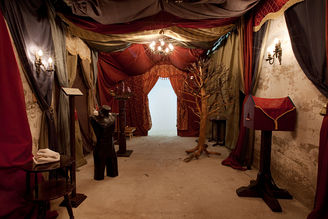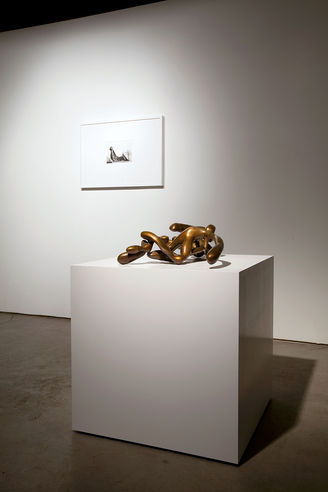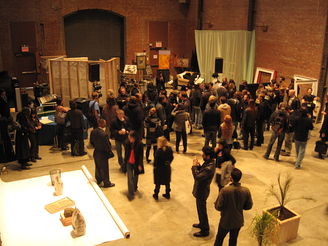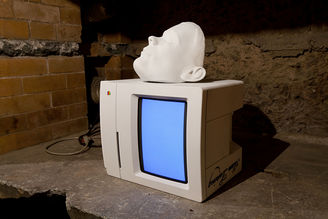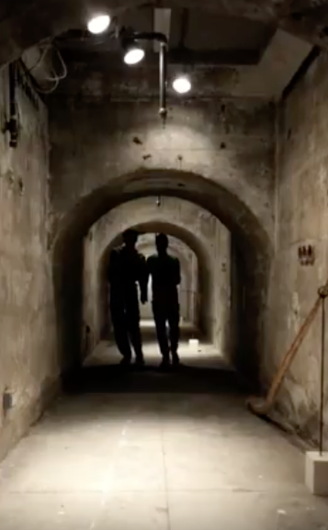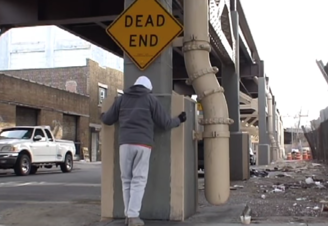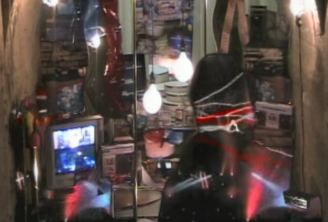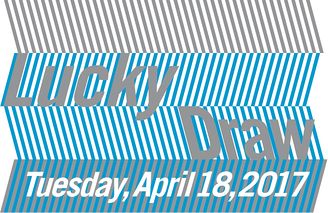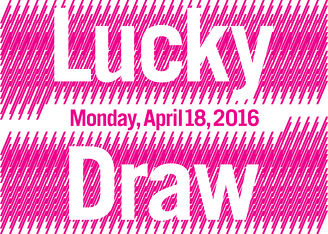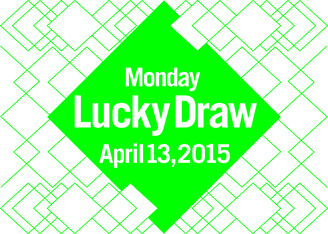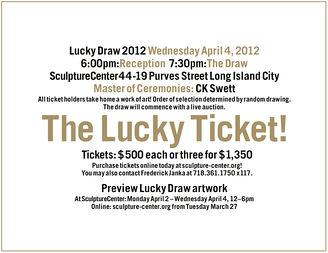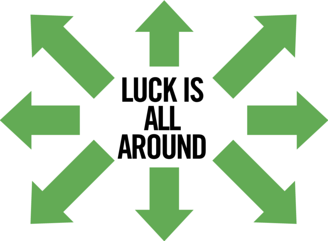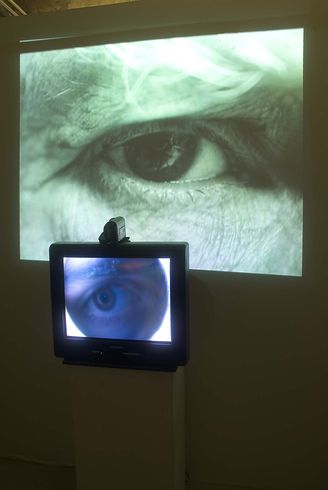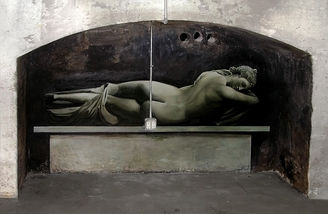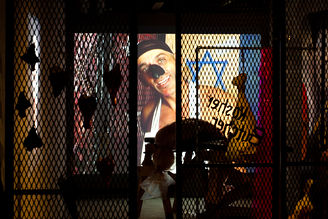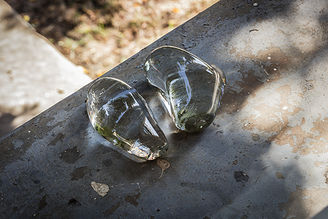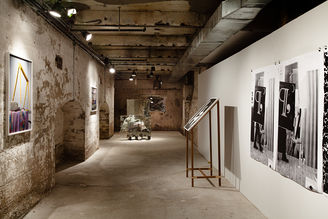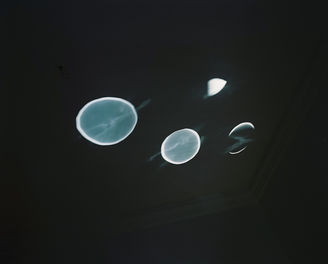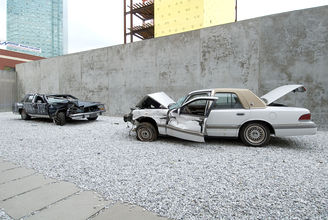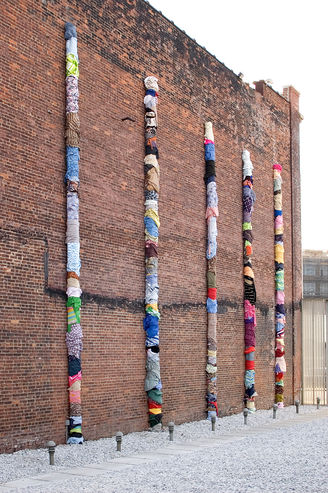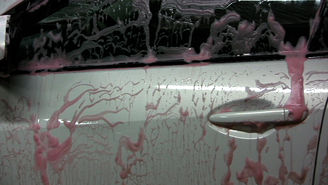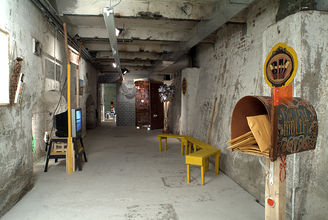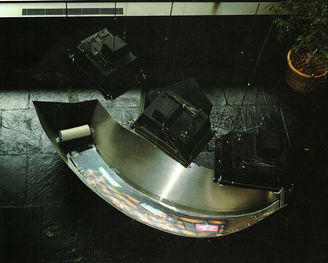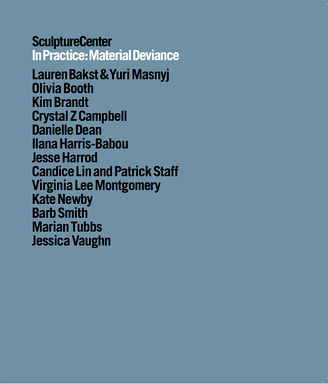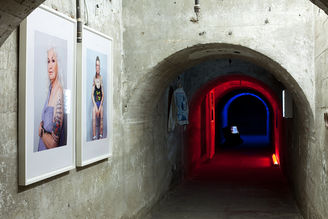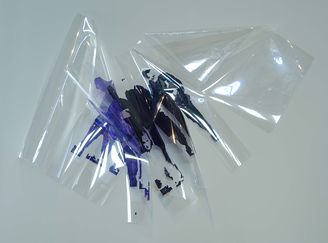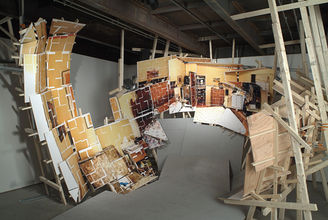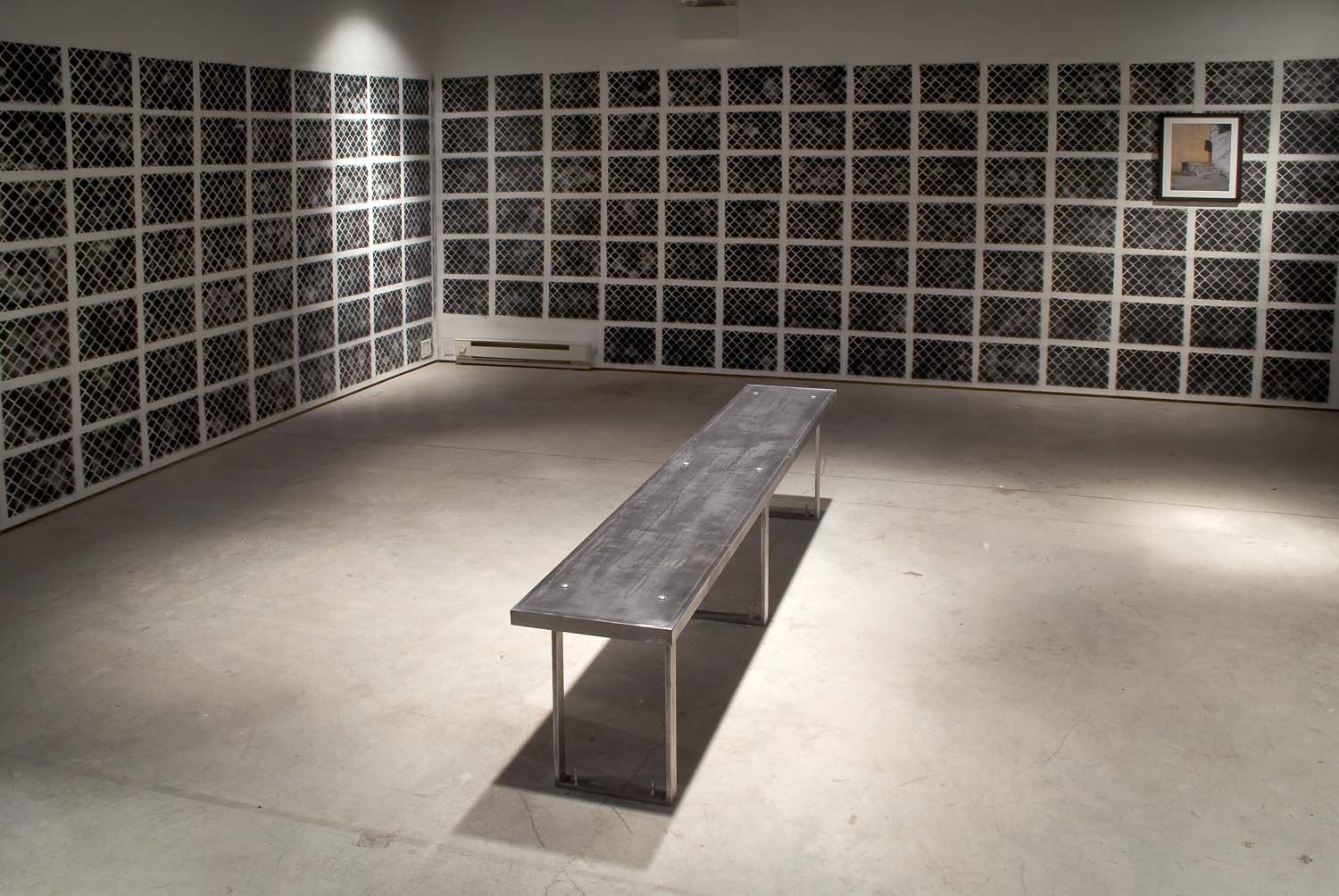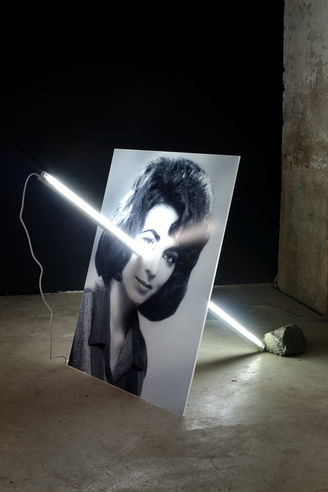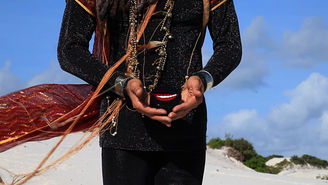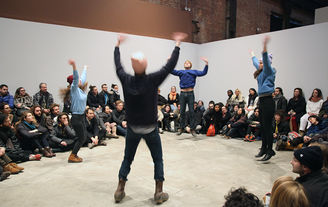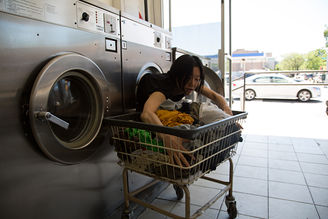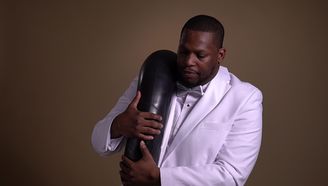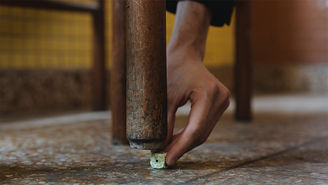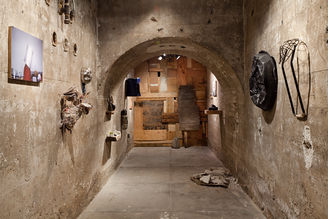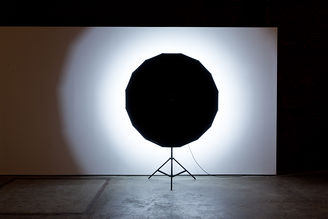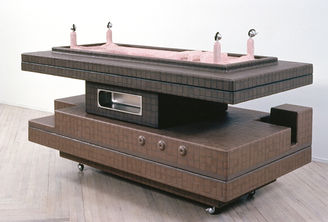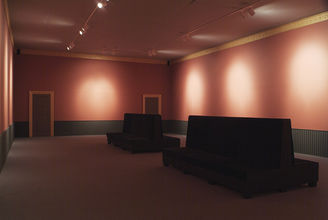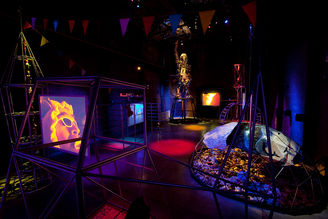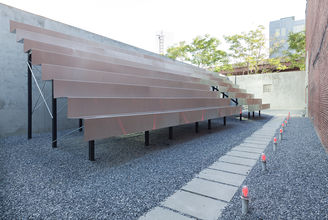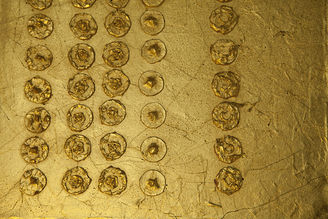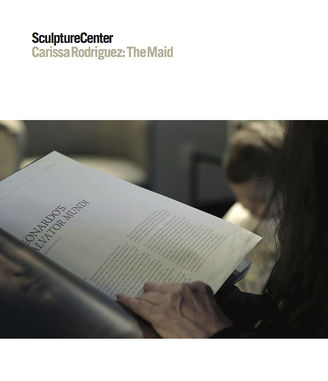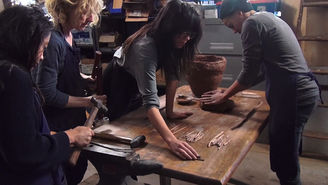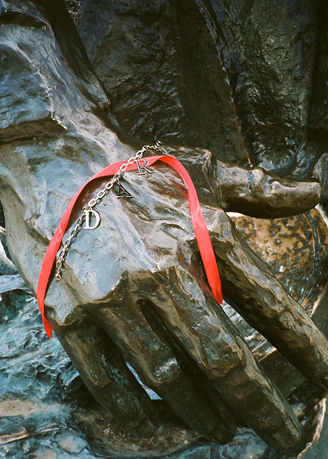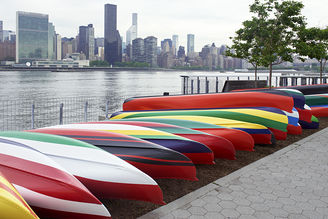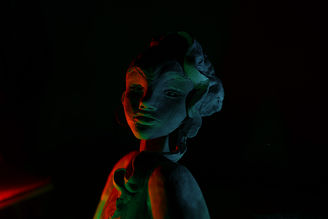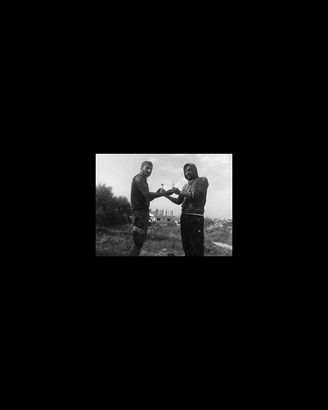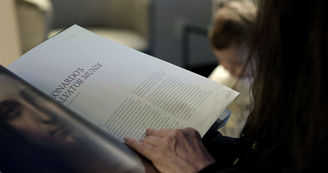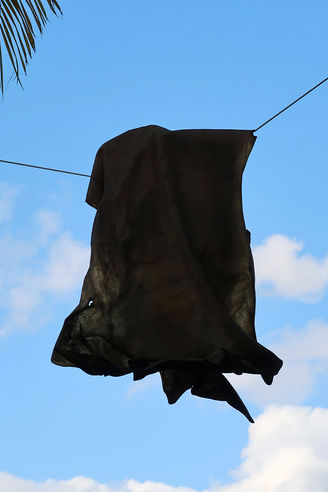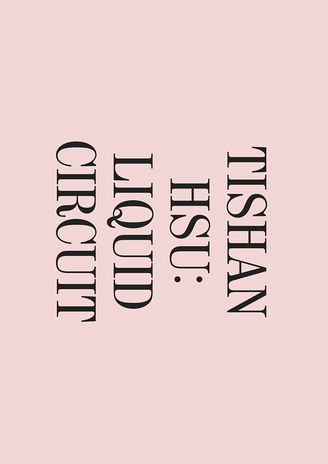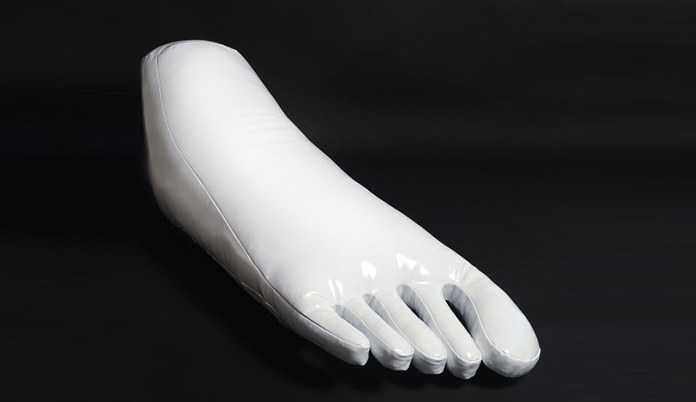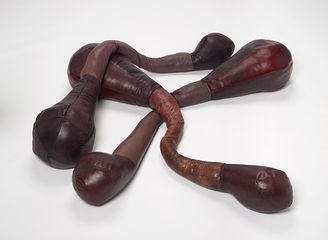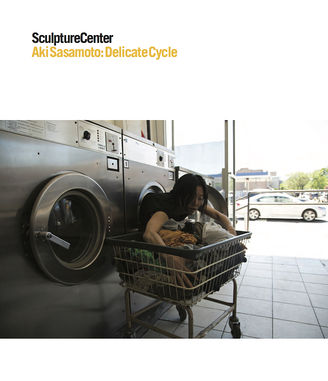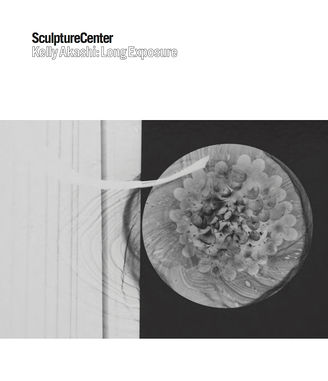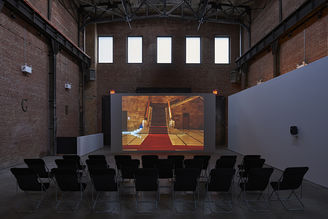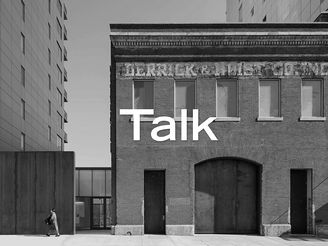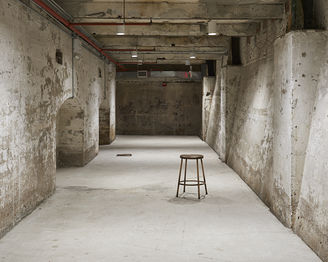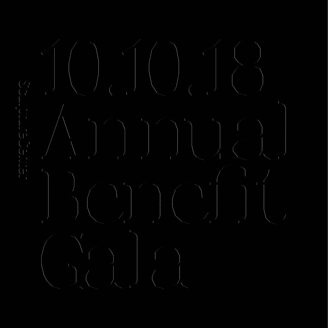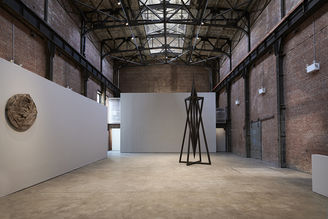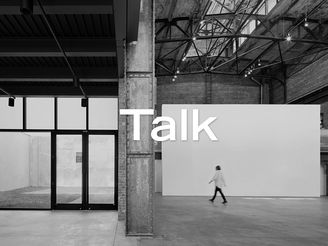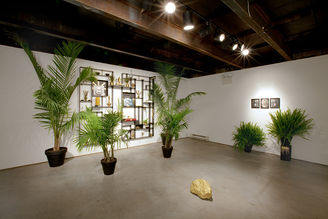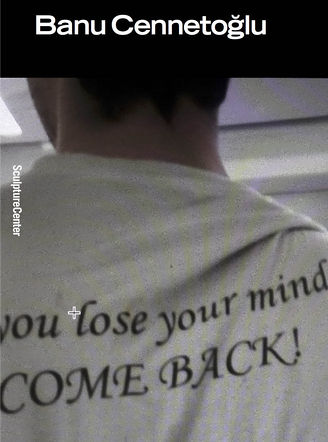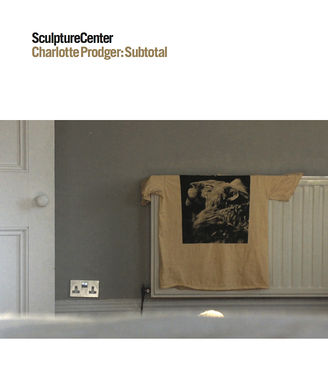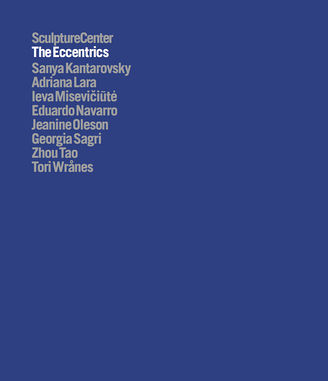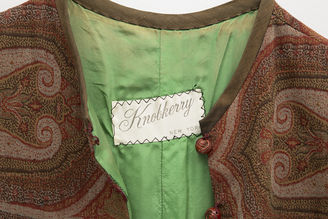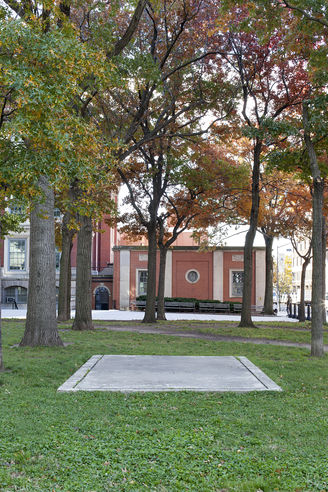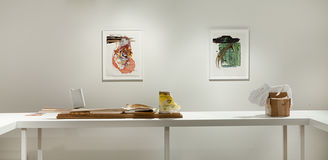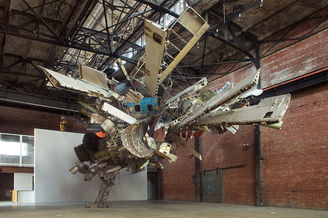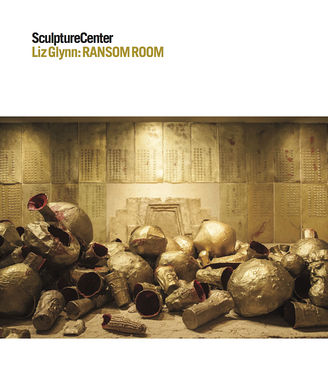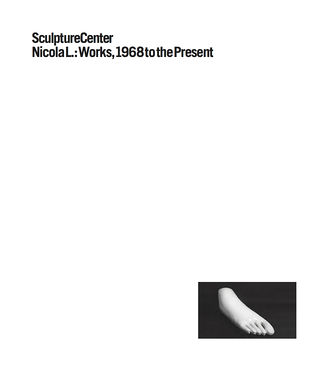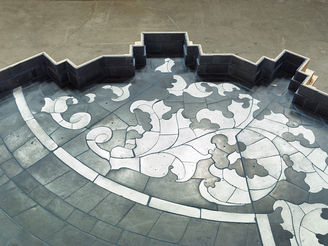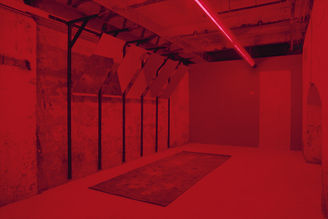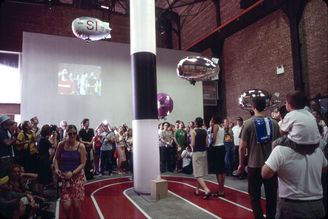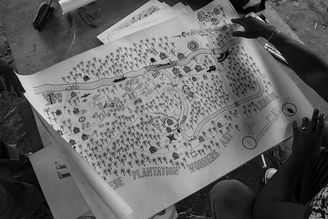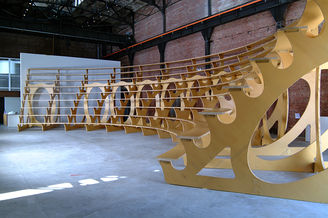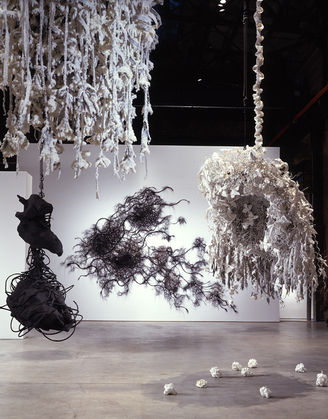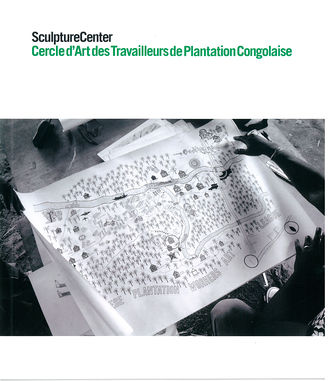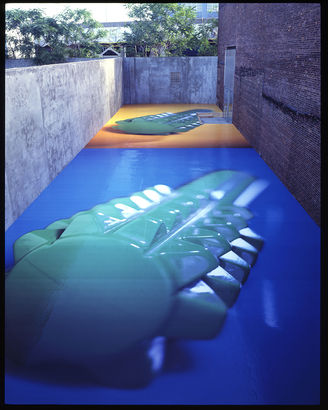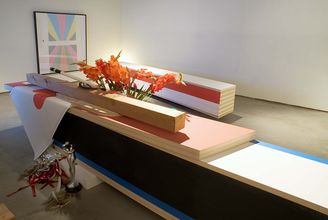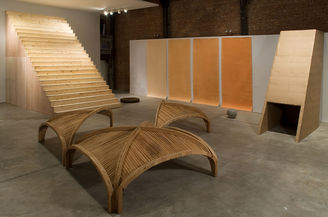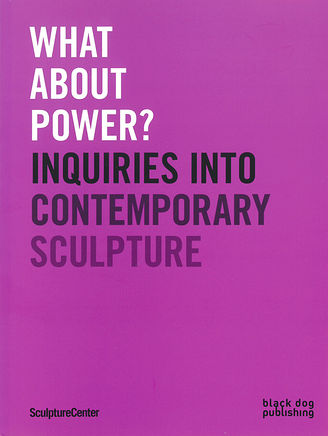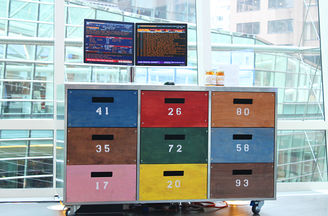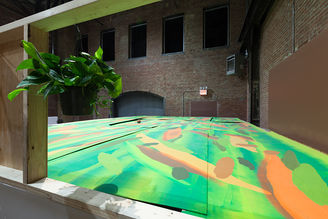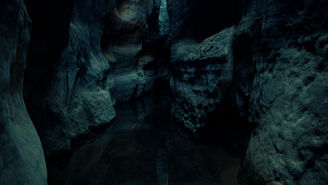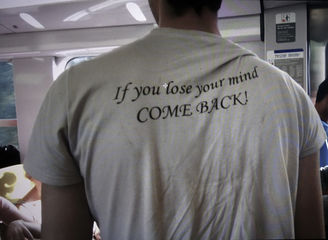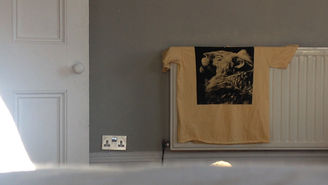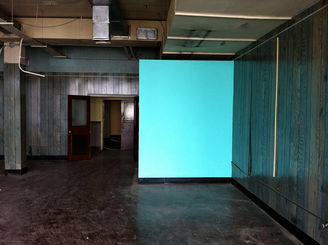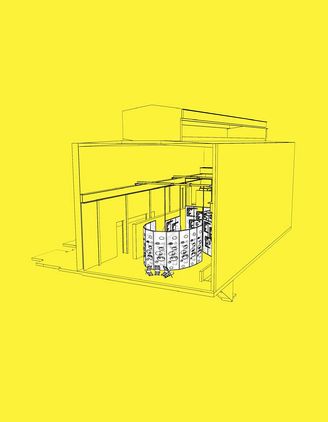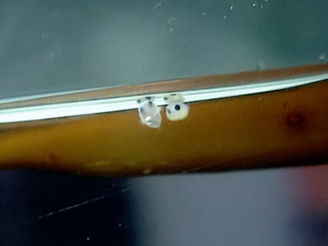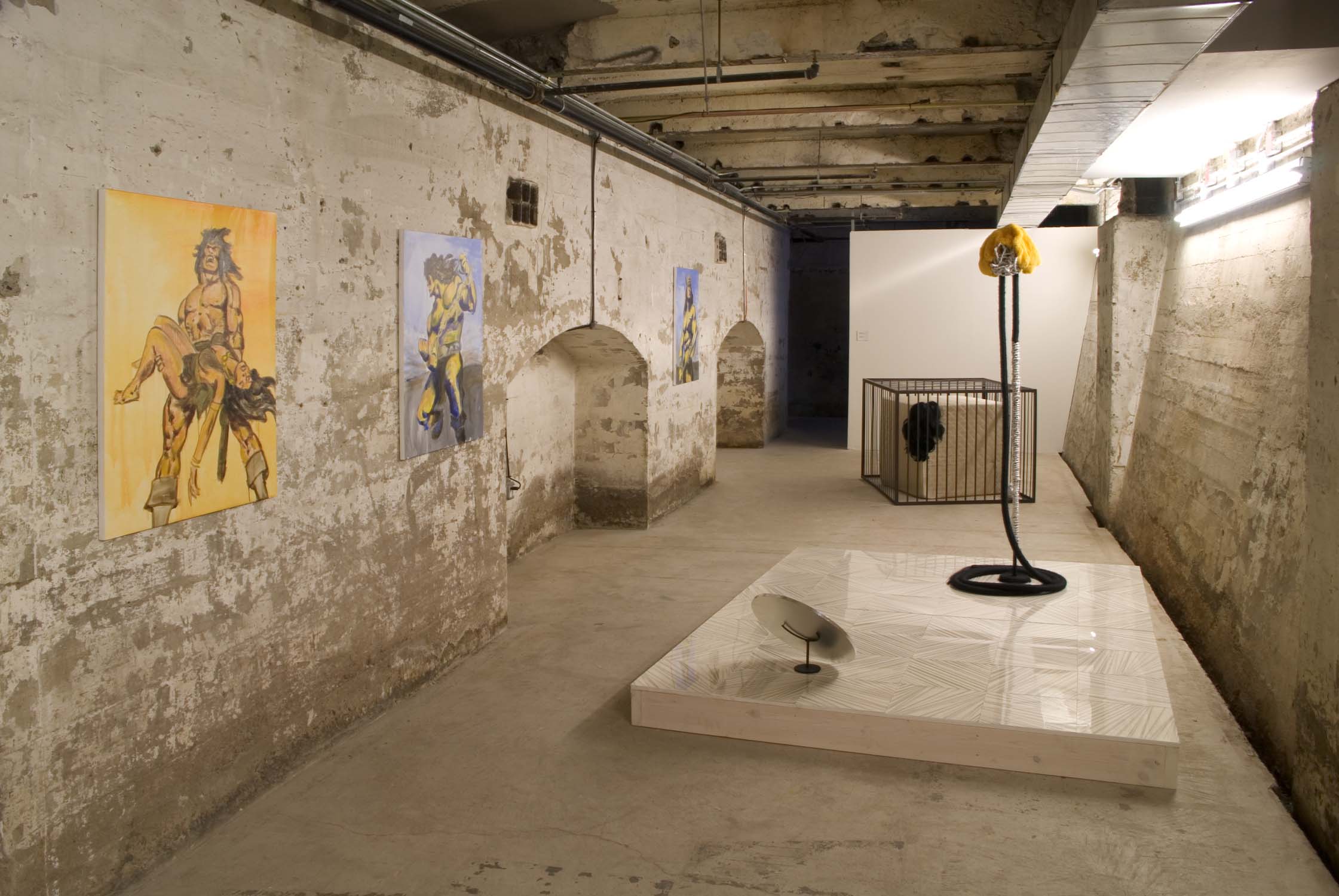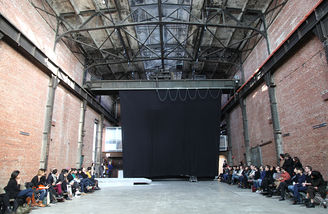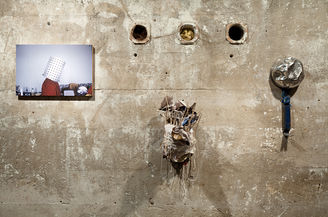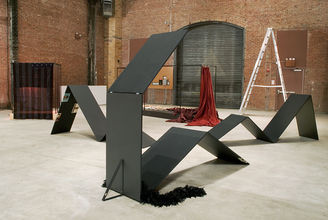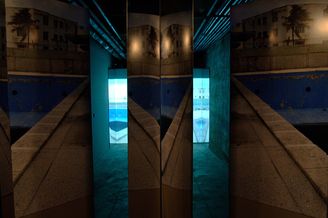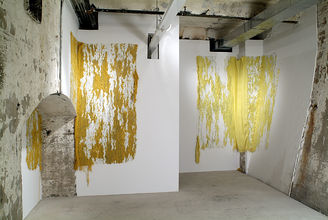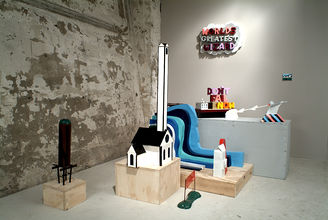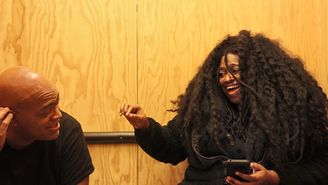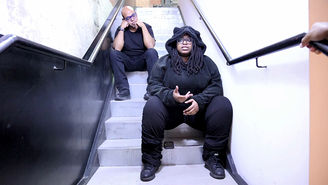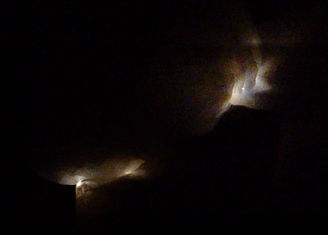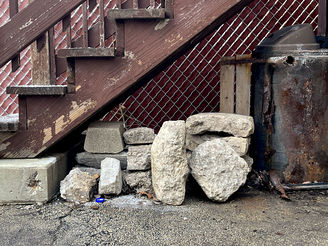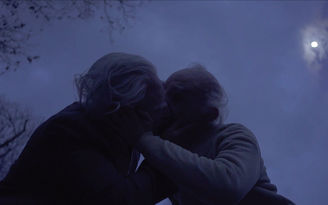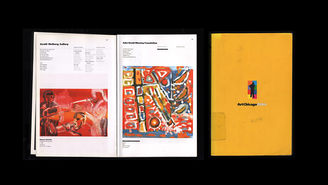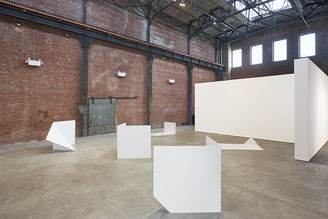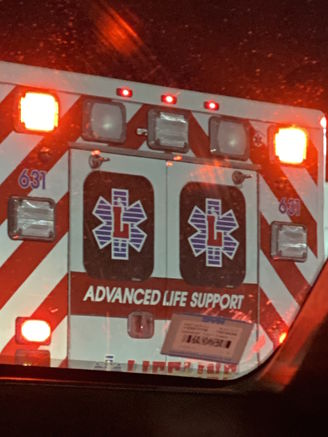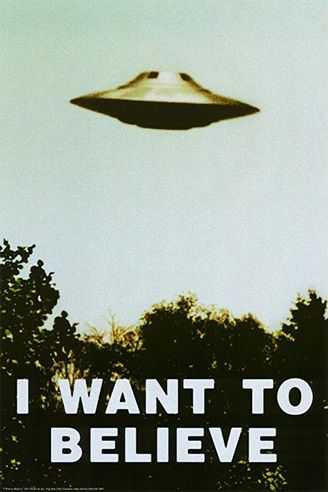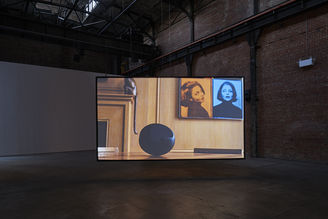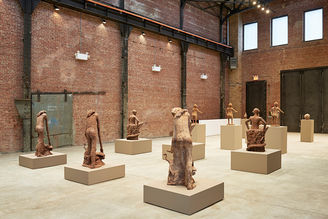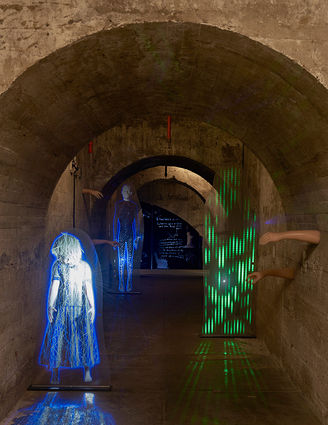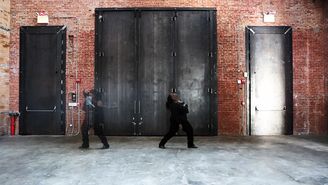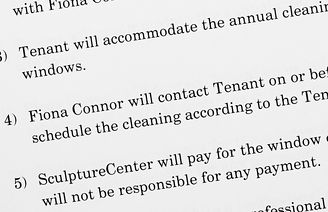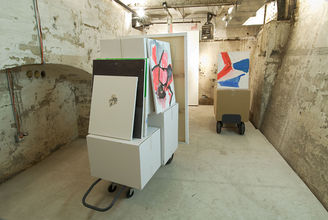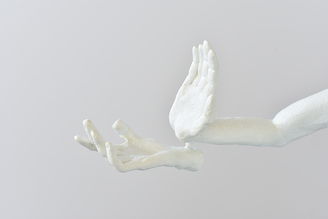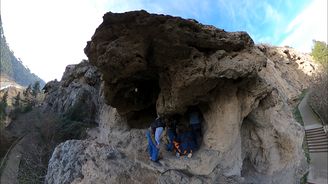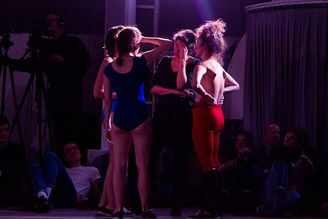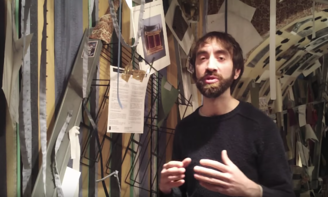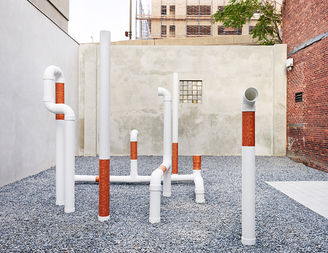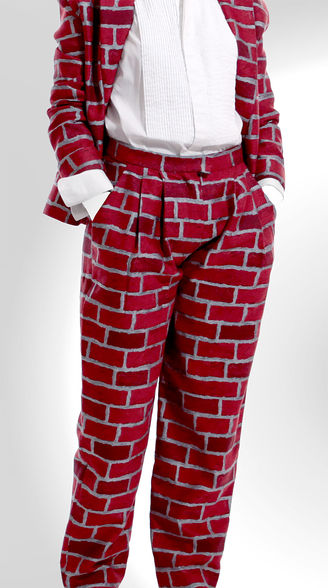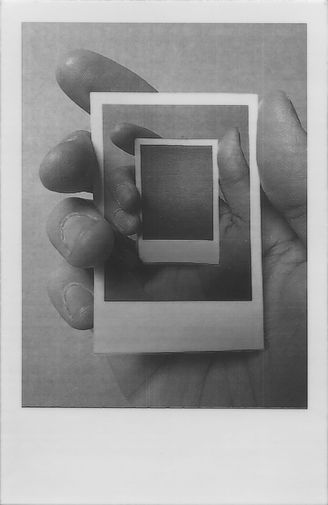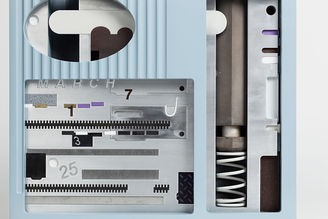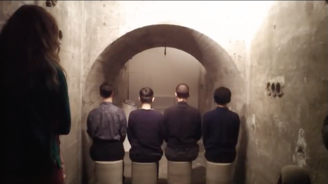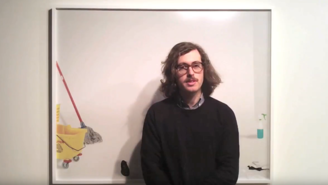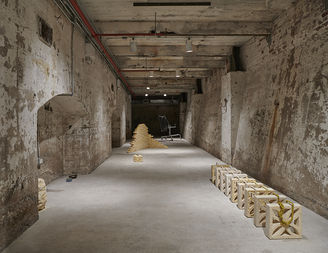In Practice Winter '09
In Practice Winter '09Jan 11–Mar 22, 2009
- Images
- Text
- Events
- Press
- Sponsors
- Related
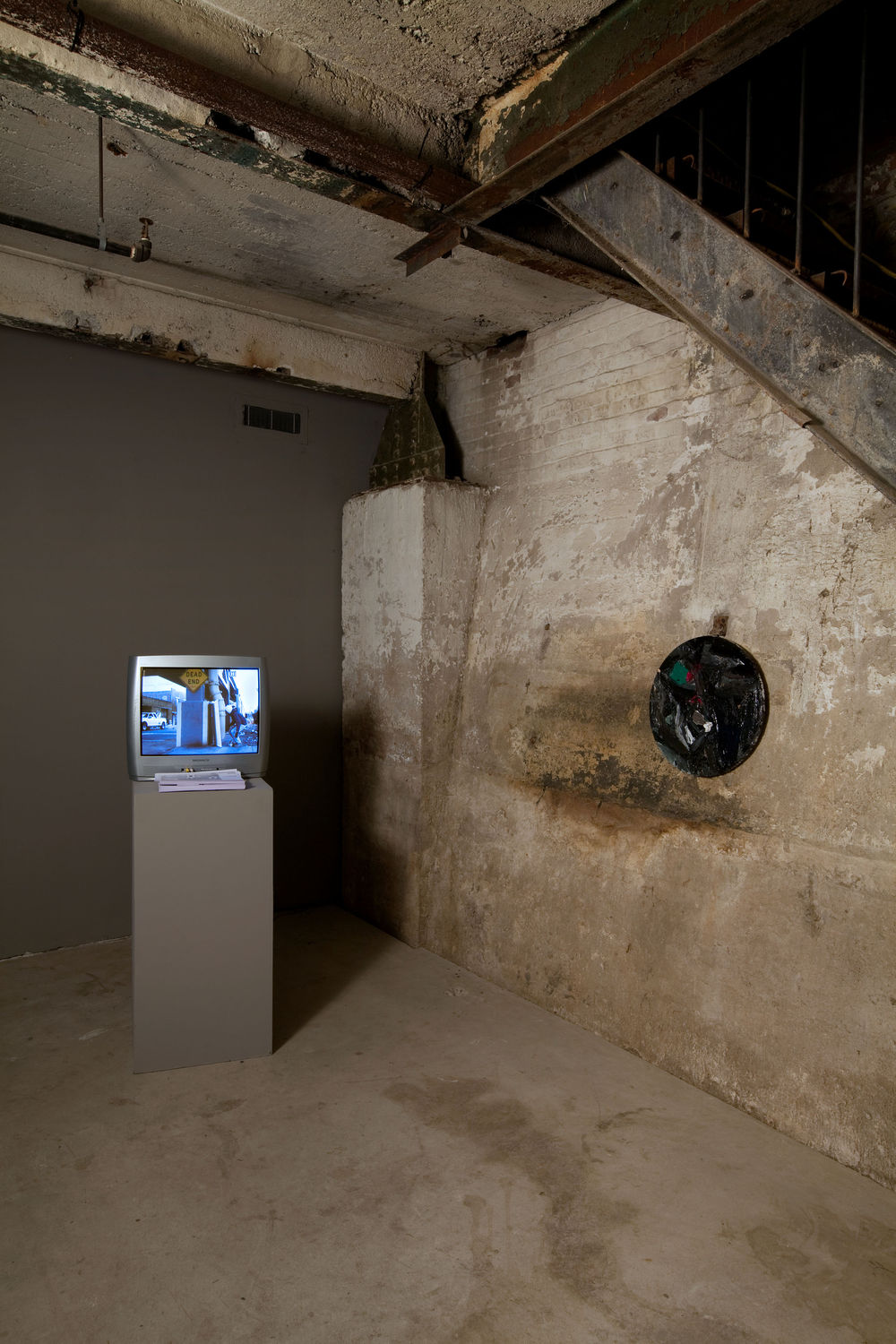
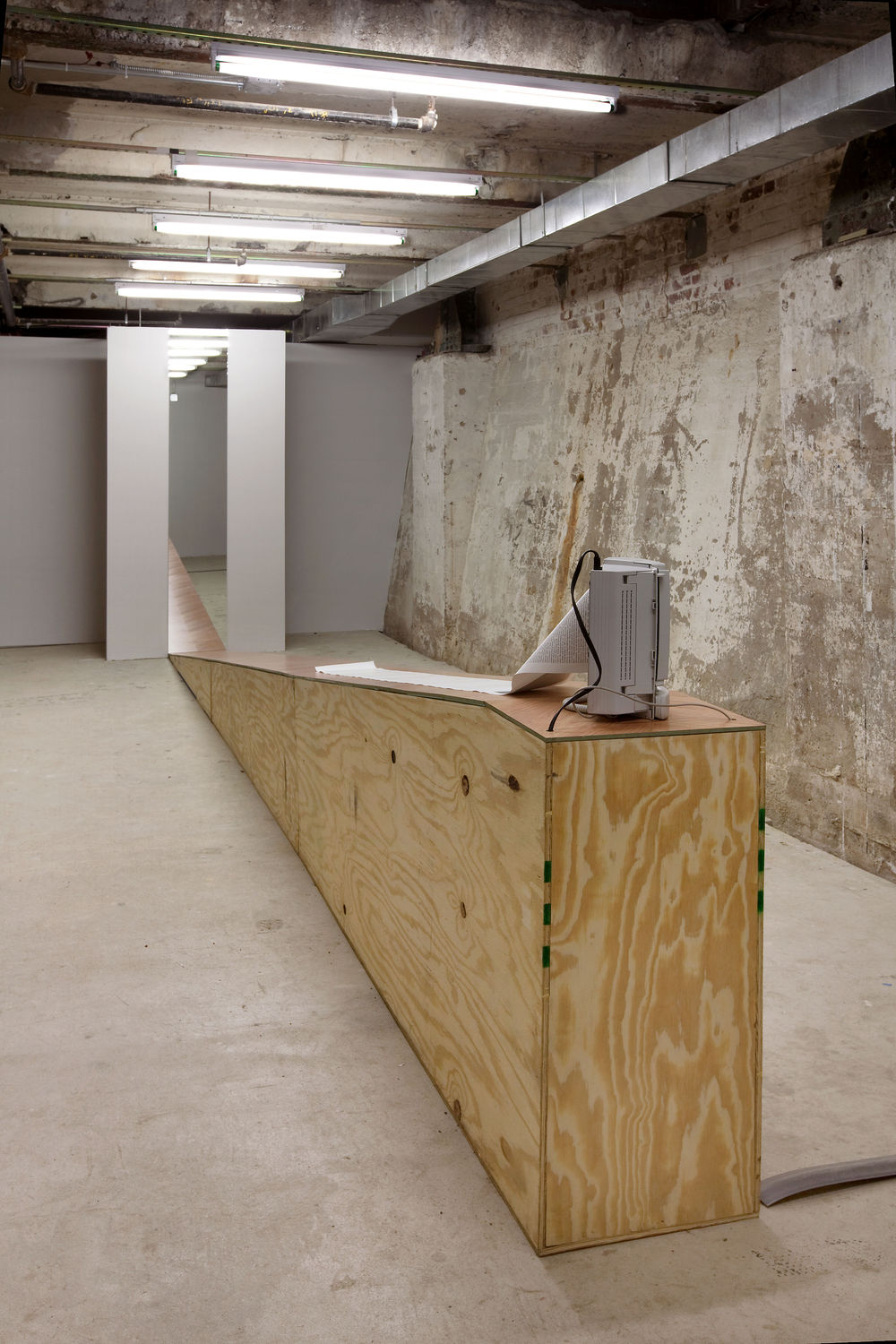
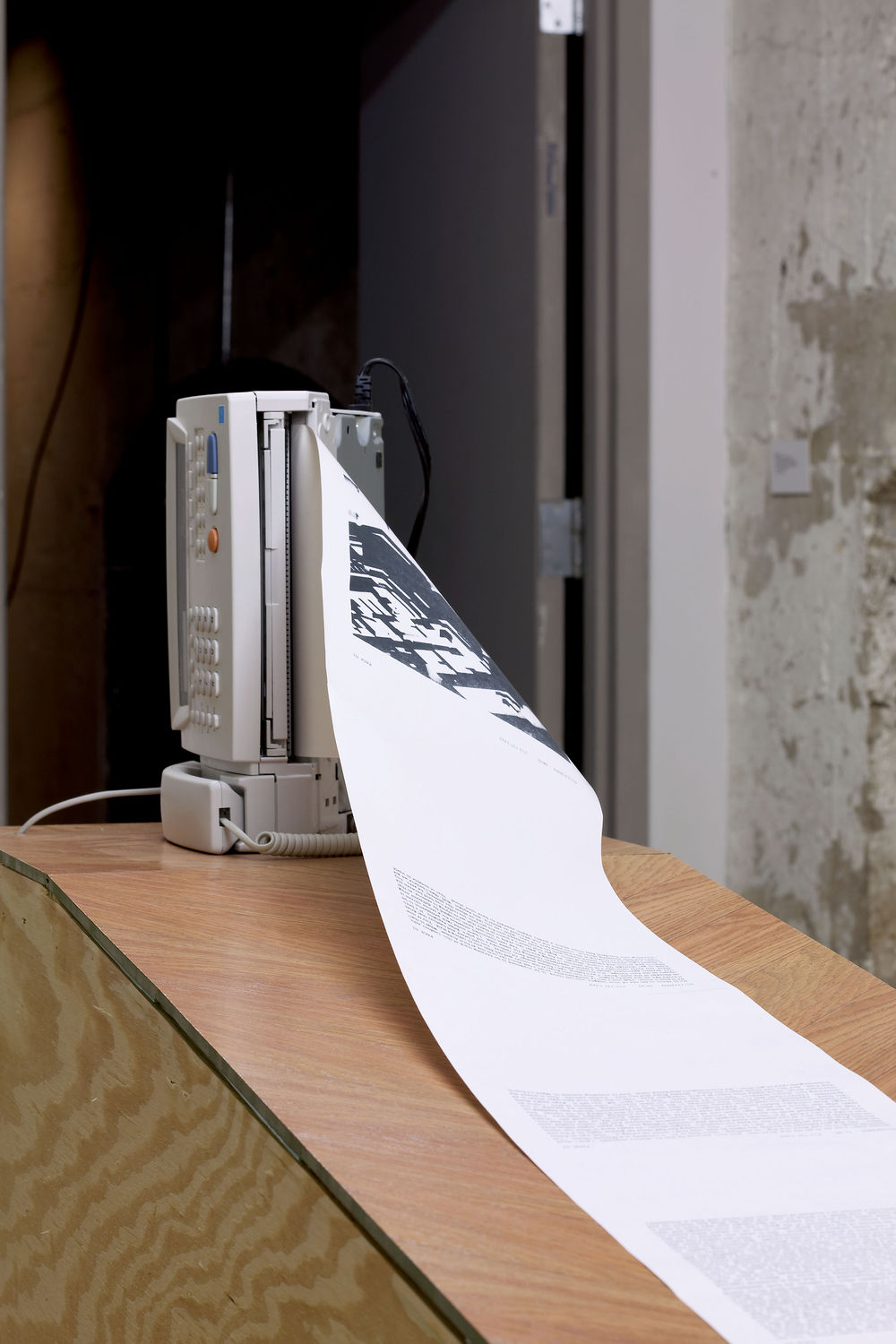
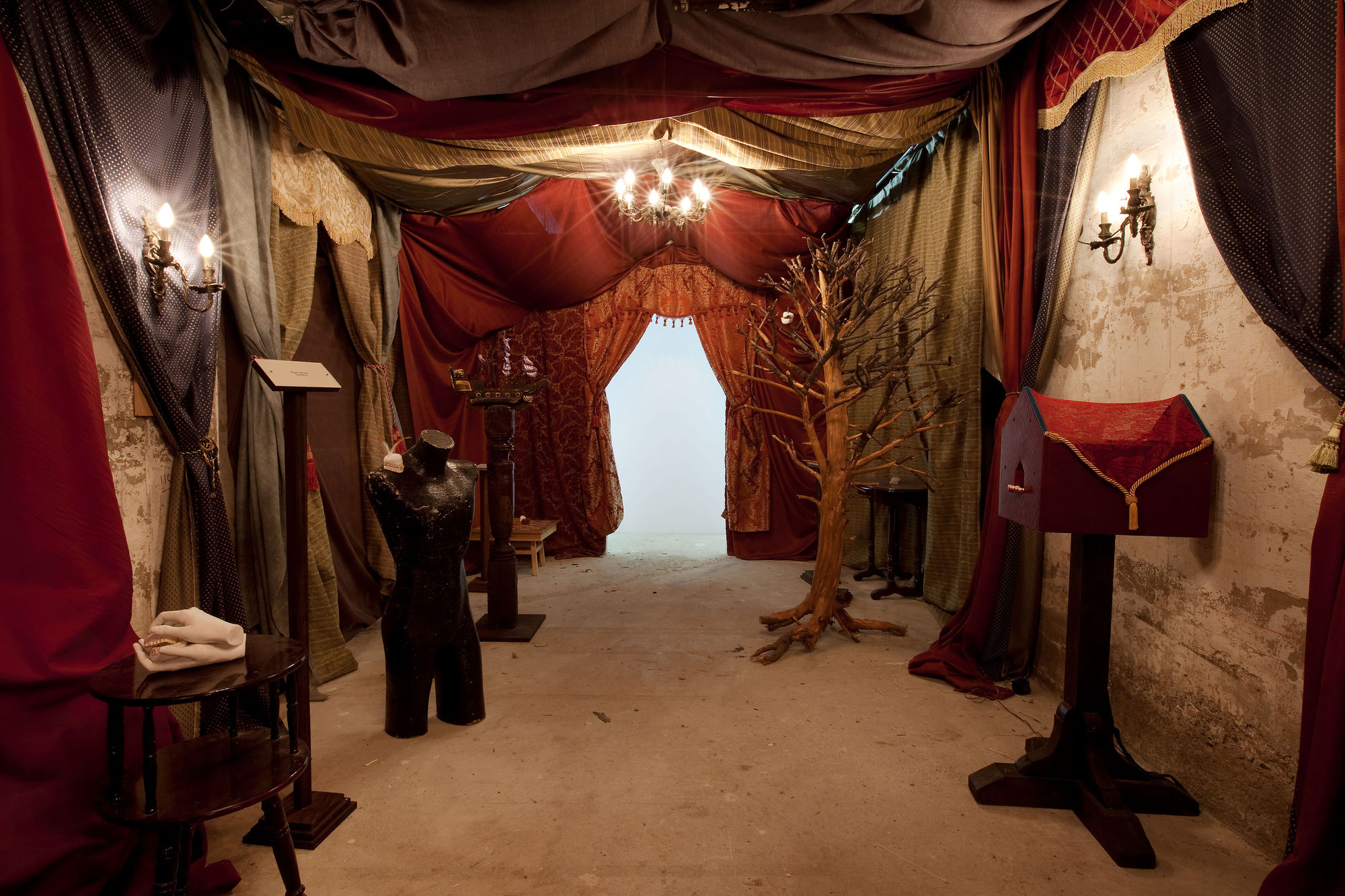
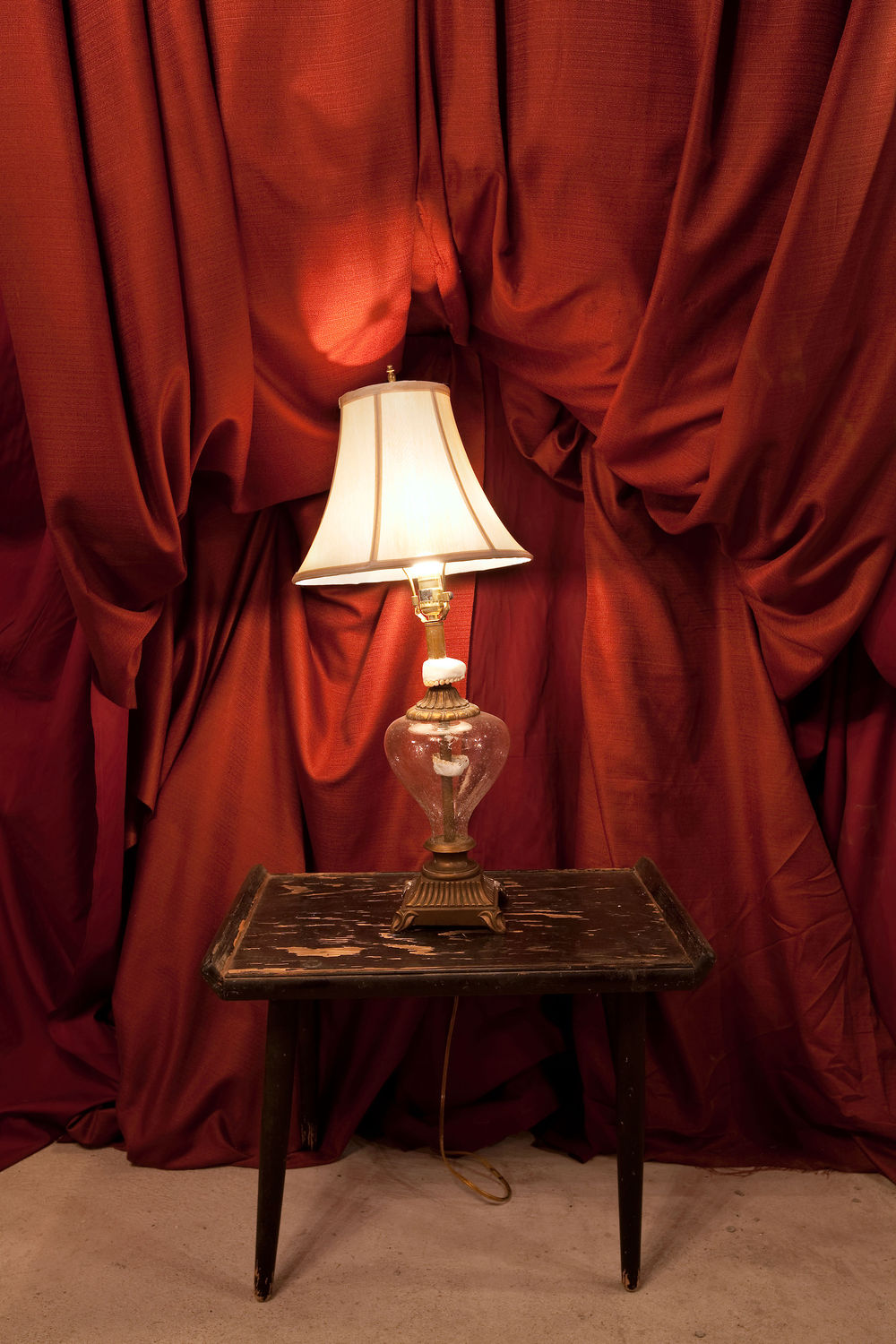
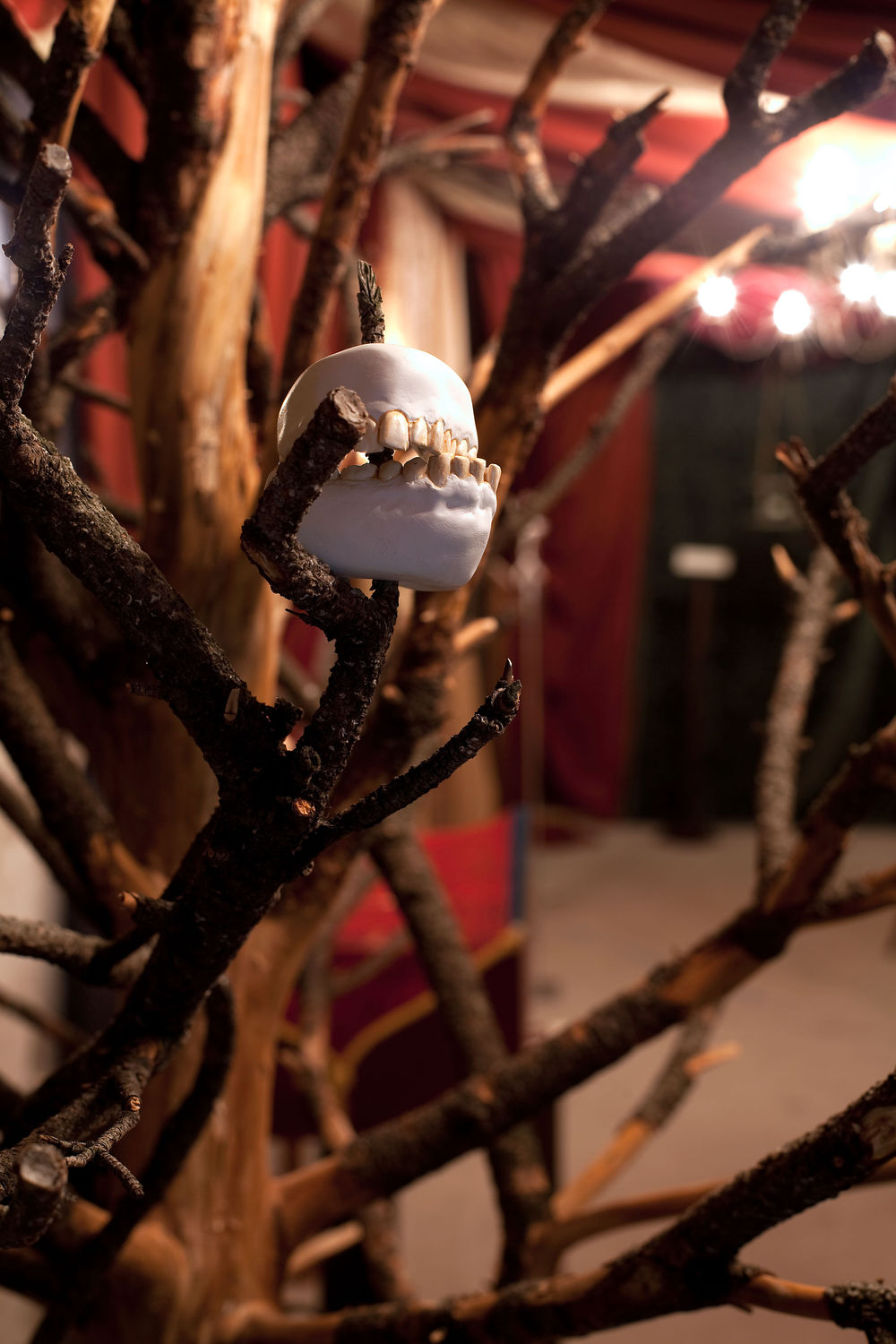
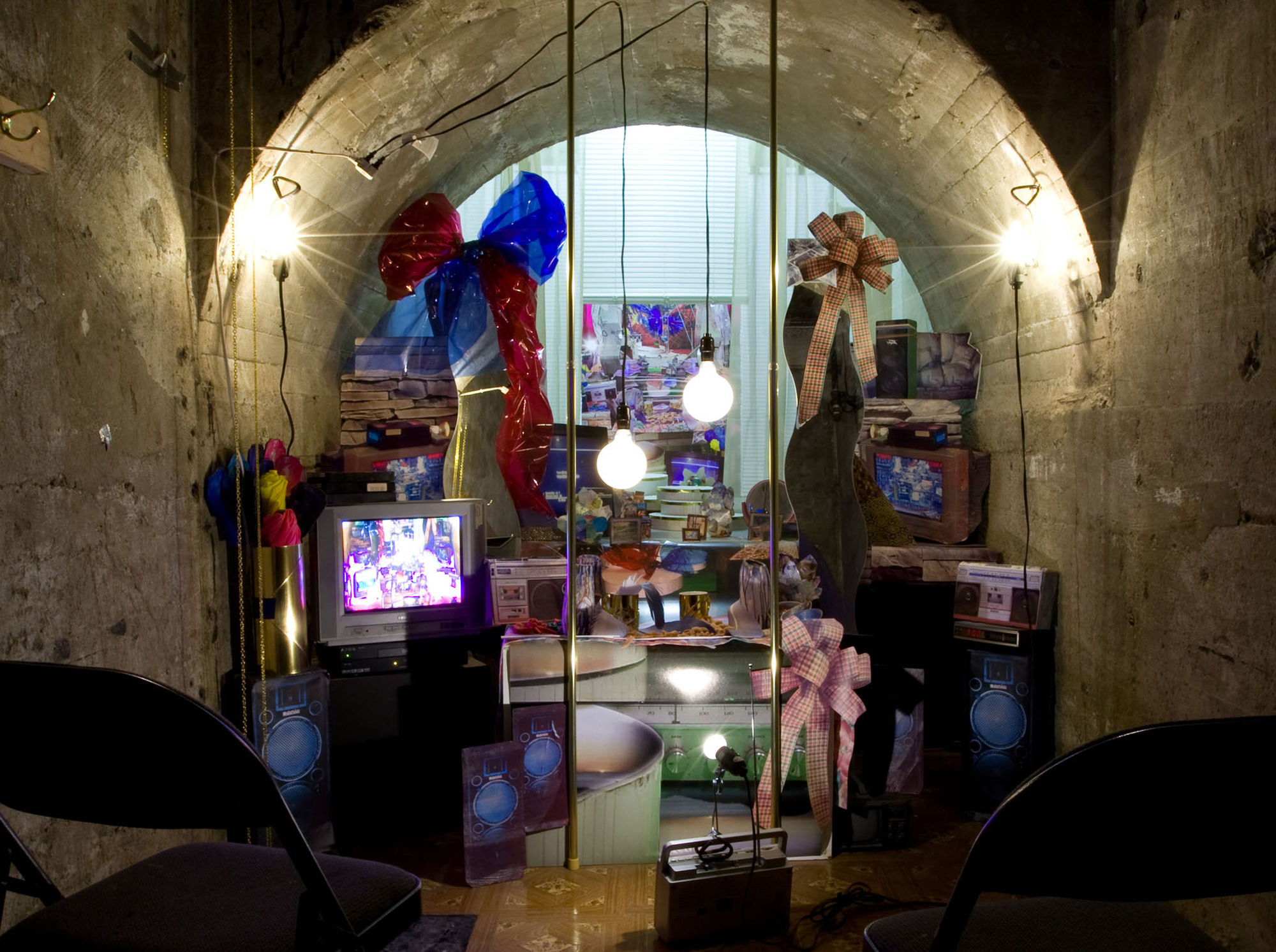
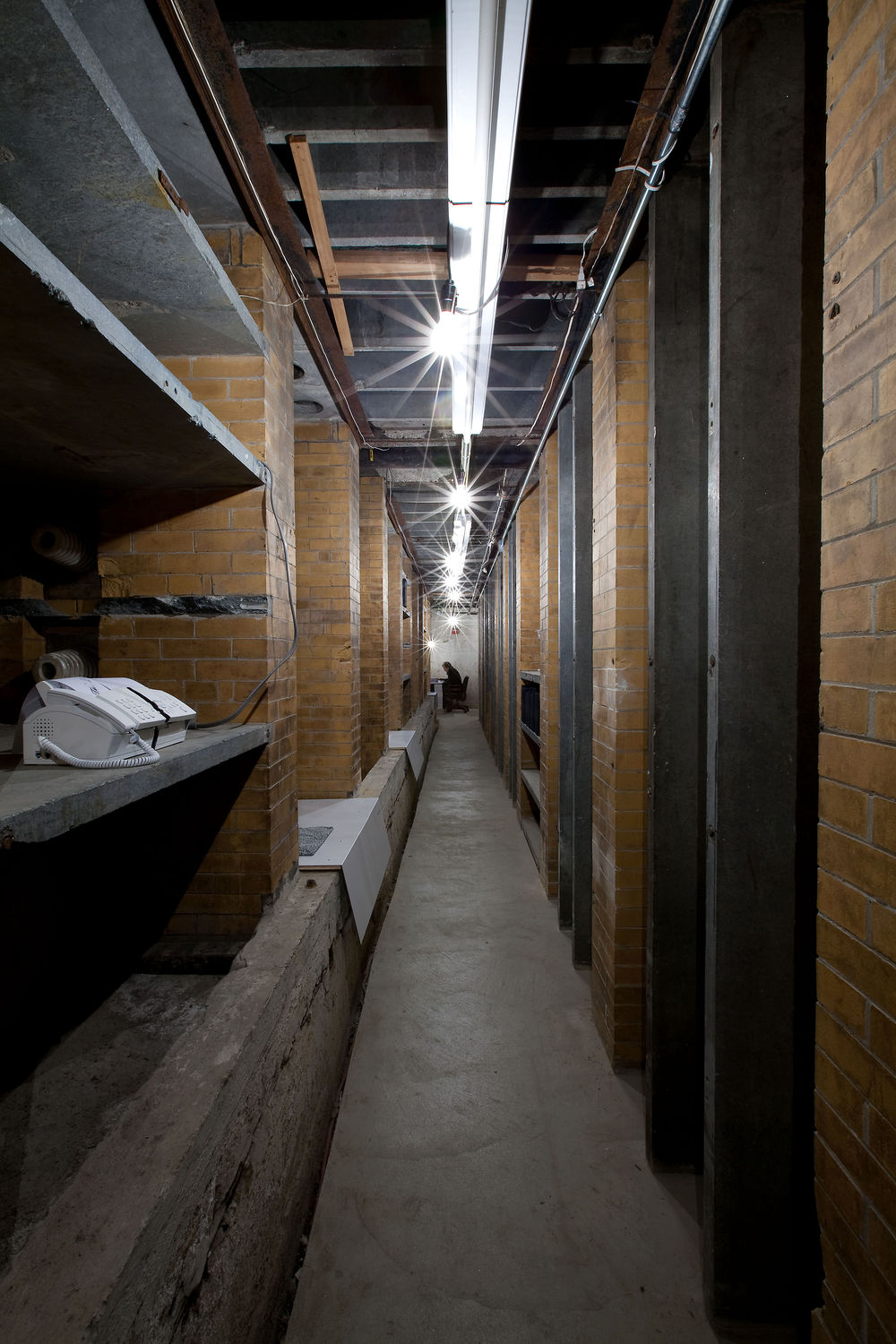
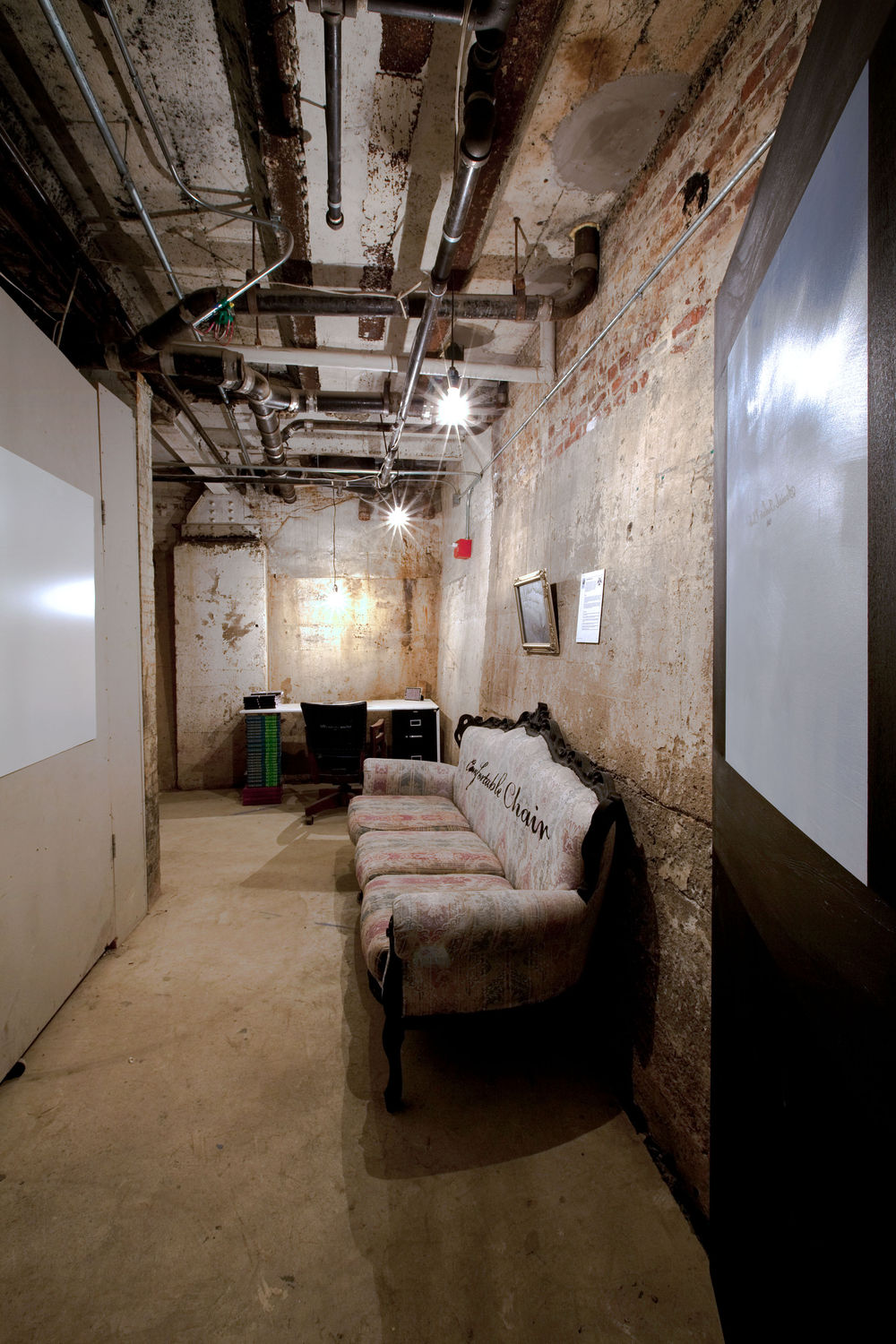
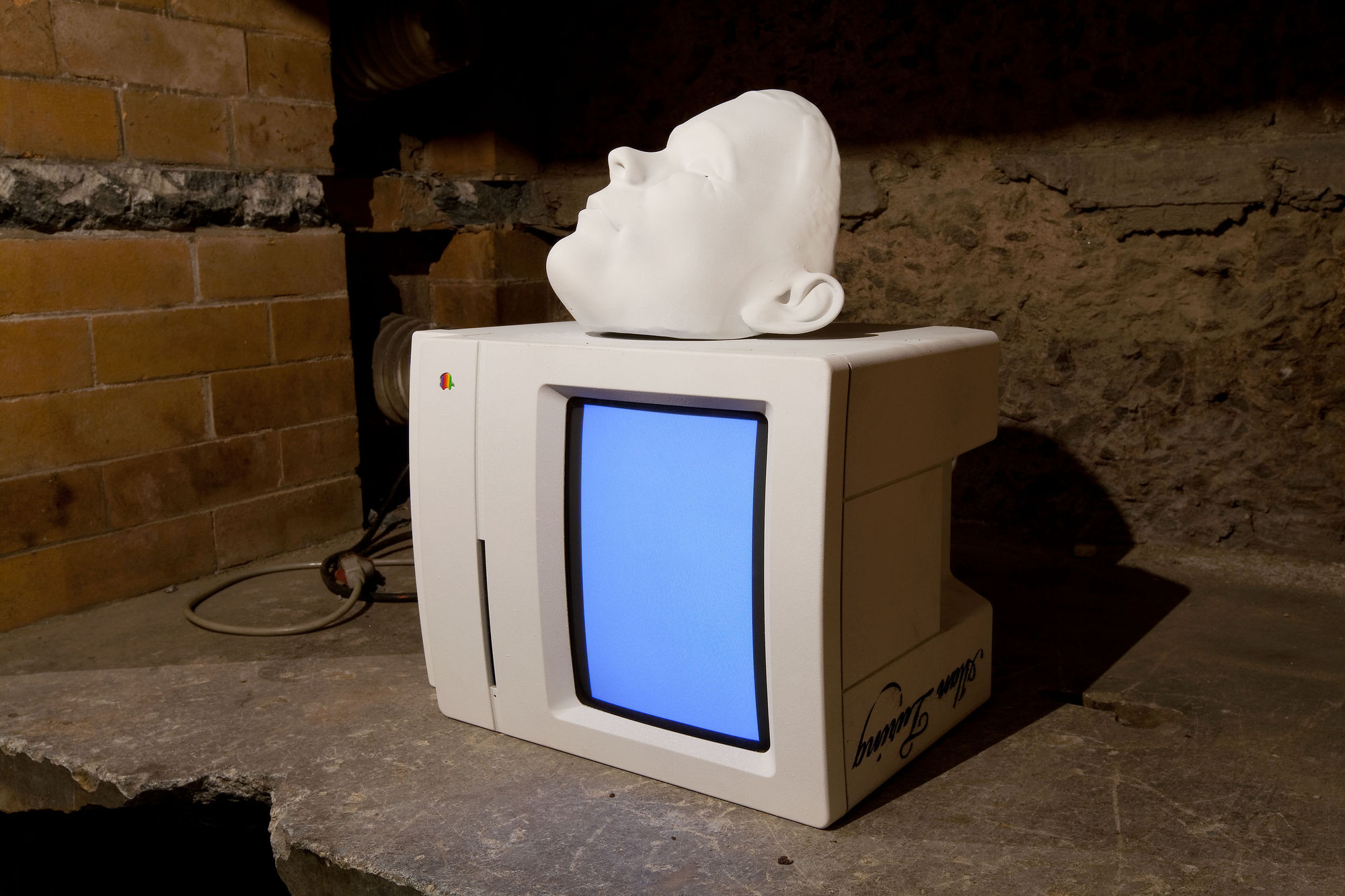
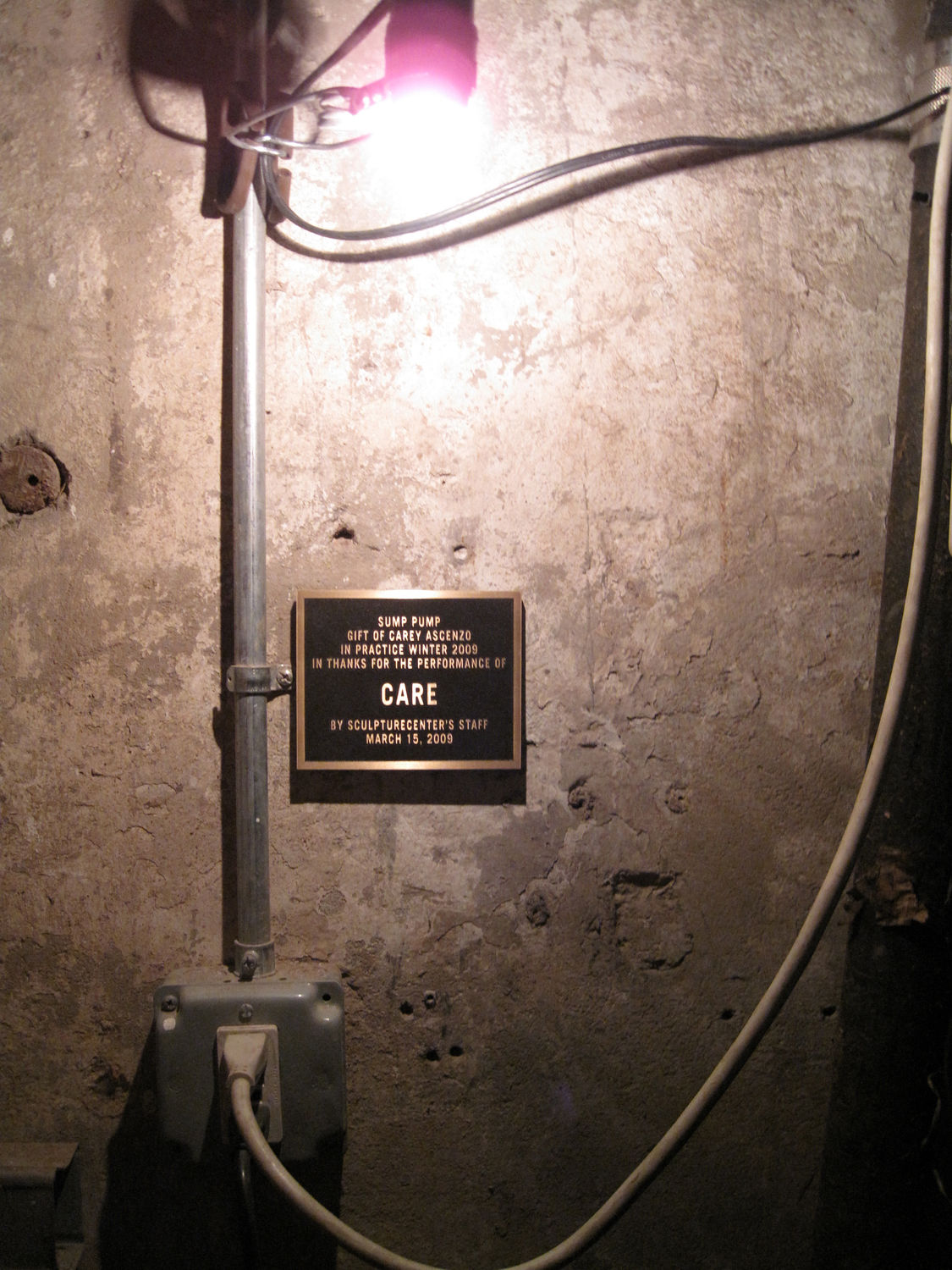
Wojciech Gilewicz, In Practice, 2009. Oil on canvas, video documentation. 3:15 minutes
The works in this exhibition are commissioned through SculptureCenter's In Practice project series, which supports the creation and presentation of innovative work by emerging artists. The projects are selected individually and reflect the diversity of approaches to contemporary sculpture. The exhibition will be on view January 11 - March 22, 2009.
Carey Ascenzo: Care, 2009. Ascenzo offers a love letter with strings attached in the form of a swap. Allocating her installation budget toward a gift to the organization chosen by the staff, Ascenzo requires in exchange a form of labor that will test the staff's comfort levels. Under the artist's supervision and coordination, SculptureCenter employees and its Executive Director will learn a song to be performed to be performed as part of SculptureCenter's public program "It's All Yours Now", March 15, 2009, at 4:00 pm. Inverting the usual relations of power and support within a museum to produce a collaborative performance, Care addresses the permeable boundary between artwork and non-artwork, and the potent combination of vulnerability and optimism in front of an audience. Thanks to Paul J. Ascenzo and Ten Minute Turns (tenminuteturns.com). Very special thanks to Sarina Basta, Mary Ceruti, Adrienne Garbini, Alexandra Lane, and Nickolas Roudané.
Becket Bowes: Social Isolate Club, 2009. Composed of a desk, a library, and a collection of objects, Becket Bowes will be inaugurating a new wing of the Social Isolate Club. The mission of the club is to define the nature of human isolation and decay through the lens of behavioral science, information theory, and a number of irresolute doctrines. The club will present a musical exploration into the meaning of the tragic death of Alan Turing, the great American computer scientist and theorist stigmatized for his sexual orientation in the 1950s; another incarnation of the Ship of Theseus; and some thoughts on logical structures. Throughout the duration of the club's inaugural exhibition, members of the Social Isolate Club can fill out the exhaustive web-based survey on human putrification at www.sicipedia.org.
Tyler Coburn: Medium No. 1 (Manhattan), 2009. Performance, technology, and urban poetics join together in Tyler Coburn's Medium No. 1 (Manhattan). Beginning on the first day of the year, Coburn will transmit improvisatory monologues and conversations recorded on walks across Manhattan to a thermal roll fax machine in SculptureCenter's basement. These daily transmissions will read as a continuous scroll, along a 25-foot long triangular structure, producing an eighty-two day portrait of a city through the interfaces of machine and mind.
Wojciech Gilewicz: In Practice, 2009. A series of oil paintings by Wojciech Gilewicz will be installed outside the SculptureCenter building. The surfaces and forms of the canvases are designed to make them appear completely invisible while they are on site. A documentation of the process of placing the works in their environment will encourage visitors to explore the periphery of the building. Using a map prepared by the artist, visitors are invited to search for the hidden paintings in the surrounding city space. Gilewicz is primarily interested in challenging visitors' perception of space, reality and their surroundings.
Samara Golden: Yes no party, 2009. This installation by Samara Golden is constructed out of found objects, photographs, mirrors, and live video. The piece includes a video camera that broadcasts live images to a monitor at its base. A spectator observing the sculpture is captured by the video camera, and is then able to view an altered version of himself or herself on the monitor. By using combinations of technology and traditional art processes, Golden presents the viewer with multiple ways to see and enter the work. She creates an endless circuit of transmitting and receiving between sculpture, monitor, and viewer.
Rachel Mason: Holy Empire of The Jaw, 2007-2009. Holy Empire of The Jaw is a portrait gallery of important figures in Rachel Mason's life. The portraits are made out of dental molds of the individuals' teeth inset into objects that relate to their life or temperament. The inspiration for the project comes from portraits of the Habsburgs, Holy Roman Emperors in Europe from the XIIV century onwards. The Habsburg Jaw, of particular interest to Mason, is a genetic underbite and enlarged jaw that is a developed trait of this dynasty, and became a celebrated symbol of power as represented in numerous portraits. Mason has taken the Habsburgs as a theme in previous sculptures and performances. In this project, Mason creates her own royal family in the setting of an alternative Holy Empire.
Amy Patton: Hairpin Magic Wand, 2008/2009. In this video by Amy Patton, two actresses are seen performing a single monologue written in response to an ambiguously labeled ancient Egyptian artifact on display at The Metropolitan Museum of Art. Mysterious voices chime in, and, through the privileges of prosopopeia, allow the hairpin/magic-wand to speak. Drawing on the conception of an echo chamber, Patton's work explores nonlinearity of time, and conceptual leaps that can lead to the dematerialization of the art object. Produced and performed in the lower level gallery space at SculptureCenter, the work was developed as part of a year-long collaboration with curator Christina Linden. Additional elements of the project will be presented in an exhibition opening April 19 at the Center for Curatorial Studies at Bard College.
Peter Simensky: CONSULTING MEDIUMS. Finding meaning(s) in uncertain times., 2009. Peter Simensky's installation places divination rods within the lower level gallery space. The forms of these rods are based on the artist's research into the use of divining mediums. Simensky will use this knowledge to trace the space of SculptureCenter's basement, searching for objects of value hidden below the floor. Simensky's piece explores how artistic gestures create potential value, and how these sets of relations might find a form of translation within objects that combine the functional, the decorative, and the symbolic.
Events
Sponsors
SculptureCenter's exhibitions and public programs are supported by The Andy Warhol Foundation for Visual Arts and The Lily Auchincloss Foundation. In Practice is supported in part by The Joan Mitchell Foundation and The Pollock-Krasner Foundation. Travel related to In Practice is supported in part by the Instytut Adama Mickieweicza.
